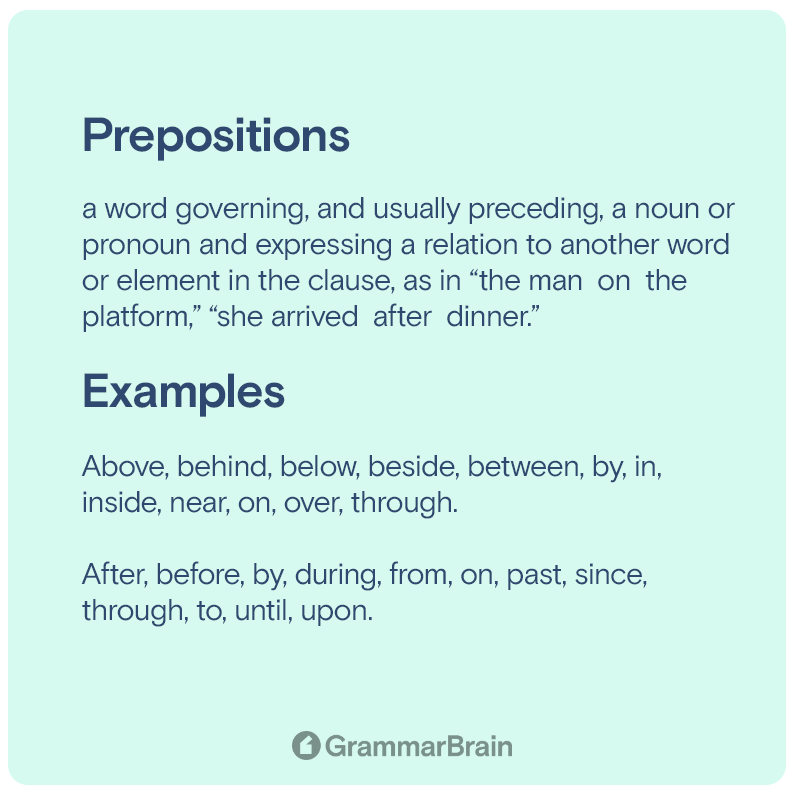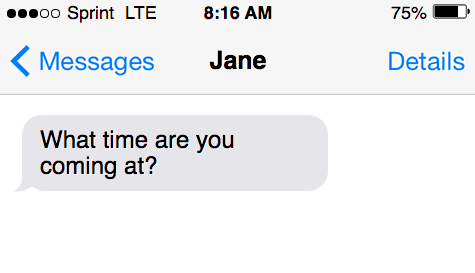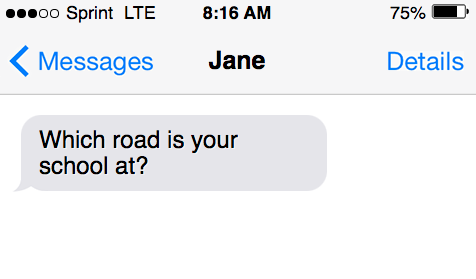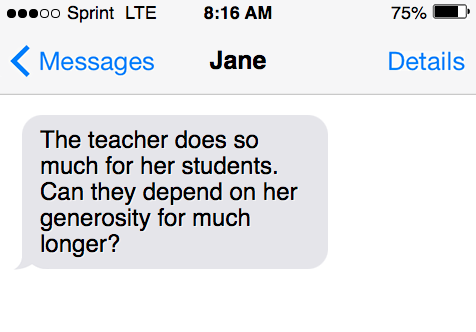What are prepositions? And how are they identified? When prepositions are overused, do they indicate poor quality writing? Learn the definition of prepositions, how to use them, and where to use them in common American English.
What are prepositions?
Merriam-Webster defines a prepositions as, “a word governing, and usually preceding, a noun or pronoun and expressing a relation to another word or element in the clause, as in “the man on the platform,” “she arrived after dinner,” “what did you do it for ?”.”
Prepositions are words that tell you when or where an object or subject is, with respect to another object or subject. Prepositions are good because they denote a location, such as “in front of” or “nearby.” Are you visiting the shop behind the market? At what time will Mary come back? Here, “behind’ is referring to a location (related to the shop), and in the other question, “at” represents a question about the time of return of the person “Mary.”
| Form | Definition |
| Preposition (noun) /ˌprepəˈziSH(ə)n/ | a word governing, and usually preceding, a noun or pronoun and expressing a relation to another word or element in the clause, as in “the man on the platform,” “she arrived after dinner,” “what did you do it for ?”. |
In other words, if you want to know where any given noun is in relation to any other given noun, you can use prepositions effectively. For instance, “the keys are in the drawer beside you”. Nonetheless, prepositions also denote abstract concepts, like purpose or contrast.
This can be seen in a sentence like the following, “They went on a hike in spite of the snow.” Here, “on” is a preposition, and so is “in spite of.” Prepositions are indicative of relationships that occur between some words in any given sentence.
| Location | Time | Movement |
| Above, behind, below, beside, between, by, in, inside, near, on, over, through | After, before, by, during, from, on, past, since, through, to, until, upon | Against, along, down, from, into, off, on, onto, out of, toward, up , upon |
Types of prepositions
In the communication of the language, the indications of time and space, direction, and various other kinds of relationships are crucial. If you want to convey a message clearly, using prepositions when you write or speak is significant. Nonetheless, where do you use what in terms of types of prepositions? It’s worthwhile to find out.
Direction sentence examples
Here are some examples that display how prepositions denoting directions may be used in language:
- You can see your destination on your left side.
- Turn right at the signals and go straight ahead.
- Be sure to visit the butcher on the left of the post office.
- You will discover the room to the right of the washroom.
- The grocery store is straight down the road.
Time sentence examples
Prepositions can give you information about time, and this is very vital when you have to communicate:
- John has worked on the project since yesterday evening.
- Will you leave for the airport by noon?
- Before you go, eat the sandwich I made for you.
- We will arrive on Christmas Day.
- In the 1960s, men landed on the moon.
Location sentence examples
Prepositions may indicate the location of something or someone. These prepositions of place tell you where any subject or object is about specific locations:
- We will meet you at the cinema.
- The department store is located on the corner of 10th and 9th Street.
- At work, he is very diligent and concentrates completely.
- Aboard the cruise liner, you will find several multi-cuisine restaurants.
- She lives in the neighborhood near the woods.
Space location examples
Many people confuse prepositions regarding space and locations. This isn’t surprising as location and space are typically used interchangeably. Space and location examples are considered to be the following:
- The cat sat under the chair.
- The book you want is on the shelf in the kitchen.
- Beside the bed, there is a Persian rug.
- Did you find what you were looking for inside the blue box?
- Below the stairs, you will see the door to the basement.

Ending a sentence with a preposition
Prepositions are used widely in the English language. They are so exhaustively used to convey meaning that they are often used at the end of sentences. Some old claims suggest that prepositions shouldn’t get used at the end of phrases or sentences. Although this has been debunked in Modern English. Most English experts and accomplished writers agree with this as well.
Examples in sentences
You can use prepositions quite naturally at the conclusion of a sentence, as highlighted below:
- Which country has Dan come from?
- Take the fruit from the bowl inside.
- There isn’t a single spot to place the mat on.
- See if you can find a box to put these books in.
- Is this the movie he wrote about?
You may think that the examples mentioned above are perfectly plausible. Nonetheless, it is often considered that prepositions used at the close of a sentence, a phrase, or a question tends to imply a simple message. Consequently, if you are looking for a more formal or elegant tone in speech or the written word, it’s a good idea to shift the location of a preposition. You can then move prepositions to a spot at the initial stages of a sentence.
Unnecessary prepositions
Granted, English can be a confusing language, with all the rules and regulations of use. It is common to make mistakes when we speak or write. Nonetheless, if we know what these are, we can prevent them in our writing and speech.
Examples in sentences
In common errors while using prepositions, people make the mistake of an additional “at” in a question, as shown below:
- Which road is your school at?
- What time are you coming at?
As you can see, these are questions where the word “at” has been used erroneously at the conclusion. In each of the examples, the question would have been perfectly correct without “at.” This error may be familiar to some dialects of English, but when you write, it is incorrect.

Whenever you are in a quandary about which prepositions you should use in any written work, you can try to prevent using them. Note that too much prepositional use implies poor writing. You can see instances where a lot of “could-be-avoided” prepositions get used below:
- Betty played basketball well, aiming the ball over into the net.
- The dog slept below and underneath the table.

How to identify prepositions
Unfortunately, there are no rules to identify prepositions successfully. The only thing that can help you is knowing what these are and how they are used. If you know the purpose that prepositions serve, you won’t find it hard to notice them and use them yourself. Here are some handy hints to help you:
- In a phrase or sentence, prepositions display relationships, positions, or directions concerning subjects and objects.
- It can express an actual position, physically like on, under, in, between, etc.
- It can express a concept of time like after, during, since, etc.
- It can express any relationship with another thing or a person, like with, beside, for, etc.
The only likely way you will be able to identify prepositions with some accuracy is if you read a lot and study them in detail.
What are the 50 prepositions?
Prepositions are used frequently in English, and some, such as “of,” are used the most. Other instances of commonly used prepositions are “to” and “in.” Here are the top 50 prepositions in use today:
- above
- after
- across
- about
- along
- around
- among
- against
- at
- below
- before
- beneath
- behind
- by
- beside
- down
- between
- except
- during
- in
- for
- in front of
- from
- into
- inside
- near
- instead of
- on
- of
- out of
- onto
- off
- over
- since
- out of
- outside
- past
- through
- toward
- underneath
- beneath
- to
- past
- under
- up
- with
- until
- upon
- without
- within
See examples in the table below.
| Preposition of | Example |
| Place | They will meet in the the lunch room. |
| Location | They will meet in the United States. |
| Spatial relationships | The post office is across the street. |
| Time | The man reads in the evening. |
| Direction | The man drove to the post office. |
What are the seven types of prepositions?
When you talk of the types of prepositions, you often think of the prepositional categories of time, location, direction, etc. While these can comprise the types of prepositions, other prepositional categories exist. Commonly, you can classify seven types of prepositions in the following manner:
- Simple Prepositions – These are commonly spoken of and used in English and refer to relationships between nouns, pronouns, and other words occurring in a sentence. They are typically used as a single word, such as up, from, among, etc.
- Dual Prepositions (Two Way Prepositions) – These are also referred to as “double prepositions”, where two words may be used in tandem, such as “out of,” “in between,” etc.
- Compound Prepositions – Prepositions are used along with other words to denote meaning. Instances of these may be “according to,” “with a view to,” etc.
- Participle Prepositions – Instead of using verbs in a sentence, past and present participles may be used to convey what a preposition does. Examples of such prepositions could be “given,” “during,” etc.
- Disguised Prepositions – As the name implies, certain prepositions are disguised as short forms of the full preposition, like “o’clock,” which means “of the clock.”
- Detached Prepositions – Any preposition that is commonly placed at the conclusion of a sentence is a detached preposition. A common example could be, “Where are you headed to?”
- Common Prepositions – In this broad category, the prepositions as they are popularly grouped according to direction, time, location, etc. are included.
Common verb and preposition combinations
When prepositions are placed after verbs in sentences, they are combined to introduce any phrase that has a noun in it. Note the examples below:

Examples in sentences
- The teacher does so much for her students. Can they depend on her generosity for much longer?
- I believe in you and know you will win the race.
Rules of prepositions
While using prepositions, there are specific rules you should follow, depending on the particular preposition in use and its purpose.
How to use them to refer to direction
Using prepositions about direction is meant to give readers or writers a sense of a location or a place. When referring to the words that fall under the list of prepositions representing directions, you must know individual word meanings to know their way of use in a sentence. Here are some of these:
- Across – This represents a location “on an opposite side”
- Around – This denotes that something has to do with “a circular direction”
- At – This is indicative of a certain point
- Up – This means anything from “below to higher”
How to use them to refer to time
In the English language, you will find three words in the list of prepositions, giving a sense of time. These are on, in and at. “On” denotes the time and the date, “in” serves the purpose of a larger amount of time, and “at” signifies a particular time or a small duration.

How to use them to refer to place
Significantly, the same three prepositions used for time, are also used to give meaning to a place.
How to use them to refer to location
In the use of prepositions in English, you can use prepositions of time and place for ascertaining locations too. Consequently, the rules of “location prepositions” make the use of the words “in,” “at,” and “on” as well.
How to use them to refer to spatial relationships
Spatial relations involve the link between a subject and an action. These prepositions follow placement rules along with verbs to denote any action taken concerning spatial positions. “Bob walked across the street” would be an example.
Parts of speech
More parts of speech:
- Parts of speech
- Adjectives
- Conjunctions
- Verbs
- Prepositions
- Possessive nouns
- Irregular plural nouns
- Proper nouns
- Concrete nouns
- Collective nouns
- Possessive and plural nouns
References:
- Preposition Examples and How to Use Them | Grammarly
- Preposition Definition & Meaning – Merriam-Webster
- Prepositions – English Grammar Today – Cambridge Dictionary
- Preposition Definition | List of Different Types of Prepositions with Examples – ESL Grammar
- The 49 Common Prepositions You Need to Know (prepscholar.com)
Inside this article
Fact checked:
Content is rigorously reviewed by a team of qualified and experienced fact checkers. Fact checkers review articles for factual accuracy, relevance, and timeliness. Learn more.
Core lessons
Glossary
- Abstract Noun
- Accusative Case
- Anecdote
- Antonym
- Active Sentence
- Adverb
- Adjective
- Allegory
- Alliteration
- Adjective Clause
- Adjective Phrase
- Ampersand
- Anastrophe
- Adverbial Clause
- Appositive Phrase
- Clause
- Compound Adjective
- Complex Sentence
- Compound Words
- Compound Predicate
- Common Noun
- Comparative Adjective
- Comparative and Superlative
- Compound Noun
- Compound Subject
- Compound Sentence
- Copular Verb
- Collective Noun
- Colloquialism
- Conciseness
- Consonance
- Conditional
- Concrete Noun
- Conjunction
- Conjugation
- Conditional Sentence
- Comma Splice
- Correlative Conjunction
- Coordinating Conjunction
- Coordinate Adjective
- Cumulative Adjective
- Dative Case
- Determiner
- Declarative Sentence
- Declarative Statement
- Direct Object Pronoun
- Direct Object
- Diction
- Diphthong
- Dangling Modifier
- Demonstrative Pronoun
- Demonstrative Adjective
- Direct Characterization
- Definite Article
- Doublespeak
- False Dilemma Fallacy
- Future Perfect Progressive
- Future Simple
- Future Perfect Continuous
- Future Perfect
- First Conditional
- Irregular Adjective
- Irregular Verb
- Imperative Sentence
- Indefinite Article
- Intransitive Verb
- Introductory Phrase
- Indefinite Pronoun
- Indirect Characterization
- Interrogative Sentence
- Intensive Pronoun
- Inanimate Object
- Indefinite Tense
- Infinitive Phrase
- Interjection
- Intensifier
- Infinitive
- Indicative Mood
- Participle
- Parallelism
- Prepositional Phrase
- Past Simple Tense
- Past Continuous Tense
- Past Perfect Tense
- Past Progressive Tense
- Present Simple Tense
- Present Perfect Tense
- Personal Pronoun
- Personification
- Persuasive Writing
- Parallel Structure
- Phrasal Verb
- Predicate Adjective
- Predicate Nominative
- Phonetic Language
- Plural Noun
- Punctuation
- Punctuation Marks
- Preposition
- Preposition of Place
- Parts of Speech
- Possessive Adjective
- Possessive Determiner
- Possessive Case
- Possessive Noun
- Proper Adjective
- Proper Noun
- Present Participle
- Prefix
- Predicate



